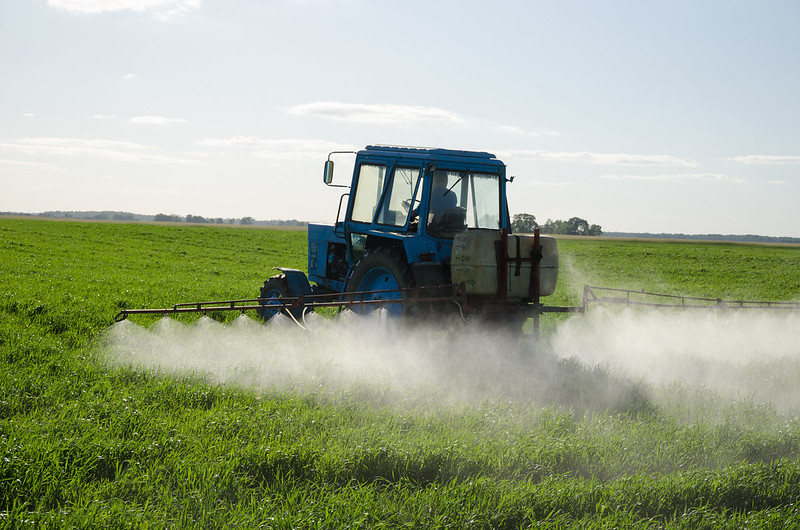The main distinction between fungicides and pesticides is that fungicides are used to eliminate disease-causing fungi such as molds, mildew, and rust, while pesticides are employed to kill harmful pests like protozoa, flatworms, nematodes, snails, slugs, insects, and mites. Diseases are a major cause of plant damage and yield loss, and can be caused by various plant pathogenic species, including fungi, bacteria, viruses, insects, and nematodes. Fungicides, herbicides, and insecticides are all commonly referred to as pesticides and are utilized to safeguard plants from pathogens.
Key Takeaways
- Fungicides are chemicals used to kill fungi that cause diseases in plants and other life forms.
- Pesticides are chemicals used to kill disease-causing pests in plants and animals.
- Both fungicides and pesticides may contain chemical compounds and biological agents to protect plants from diseases and pests.
What are Fungicides?
Fungicides are chemicals employed to eliminate fungi that cause diseases. They are biocidal chemical compounds or biological organisms utilized to kill, repel, or control parasitic fungi or their spores. Fungi can typically cause significant crop damage in agriculture, resulting in critical losses of yield, quality, and profits. Fungicides are used in both agriculture and medicine to combat fungal infections in animals. Chemicals used to control oomycetes are also considered fungicides, as oomycetes use the same mechanisms as fungi to infect plant species.
There are three types of fungicides: contact, translaminar, and systemic. Contact fungicides are not usually absorbed into plants, remaining on the plant surface and providing protection. Translaminar fungicides redistribute the fungicide from the upper sprayed leaf surface to the lower unsprayed leaf surface. Systematic fungicides are taken up and redistributed throughout the xylem vessels of plants. Fungicides have active ingredients such as sulfur, neem oil, rosemary oil, jojoba oil, bacterium Bacillus subtillis, and the beneficial fungus Ulocladium oudemansii. Examples of fungicides chemicals include mancizeb, maneb, nabam, zineb, benomyl, cycloheximide, triadimefon, and metalaxyl thiabendazole.
What are Pesticides?
Pesticides are chemicals used to kill pests that cause diseases in plants and animals. Generally, they are chemicals or biological agents such as viruses and bacteria that deter, incapacitate, or kill pests. Pesticides are grouped into several categories: insecticides (active against insects), herbicides (active against certain plants), rodenticides (active against rats and mice), bactericides (active against bacteria), fungicides (active against fungi), and larvicides (active against larvae).
Pesticides may contain inert ingredients such as certain edible oils, spices, herbs, beeswax, cellulose, organic compounds like carbamate, and biological agents like beneficial viruses, bacteria, and fungi. Pesticides are active against insects, plant pathogens, weeds, molluscs, birds, mammals, fish, nematodes, and microbes. Moreover, pesticides are used in agriculture, human health protection, and environmental protection. Some well-known pesticides include organophosphate, carbamate, organochlorine insecticides, pyrethroid, sulfonylurea herbicides, and biopesticides.
What are the Similarities Between Fungicides and Pesticides?
Fungicides and pesticides are chemicals mainly used to protect plants. Fungicides are a type of pesticide. Both contain chemical compounds and may contain biological agents such as viruses and bacteria. The usage of both may cause unintended consequences, such as environmental pollution.
What is the Difference Between Fungicides and Pesticides?
Fungicides are chemicals used to kill fungi that cause diseases in plants and other life forms, while pesticides are chemicals used to kill disease-causing pests. The key difference between fungicides and pesticides is their target organisms. Fungicides contain sulfur, copper, neem oil, rosemary oil, jojoba oil, bacterium Bacillus subtillis, and the beneficial fungus Ulocladium oudemansii. In contrast, pesticides contain inert ingredients such as certain edible oils, spices, herbs, beeswax, cellulose, organic compounds like carbamate, and biological agents like beneficial viruses, bacteria, and fungi.
Summary – Fungicides vs Pesticides
Fungicides and pesticides are chemicals used to protect primarily plants. Fungicides are chemicals used to kill fungi, while pesticides are chemicals used to kill pests. Therefore, fungicides are useful in controlling fungal diseases, while pesticides are useful in controlling pest attacks on plants mainly. This summarizes the difference between fungicides and pesticides.
